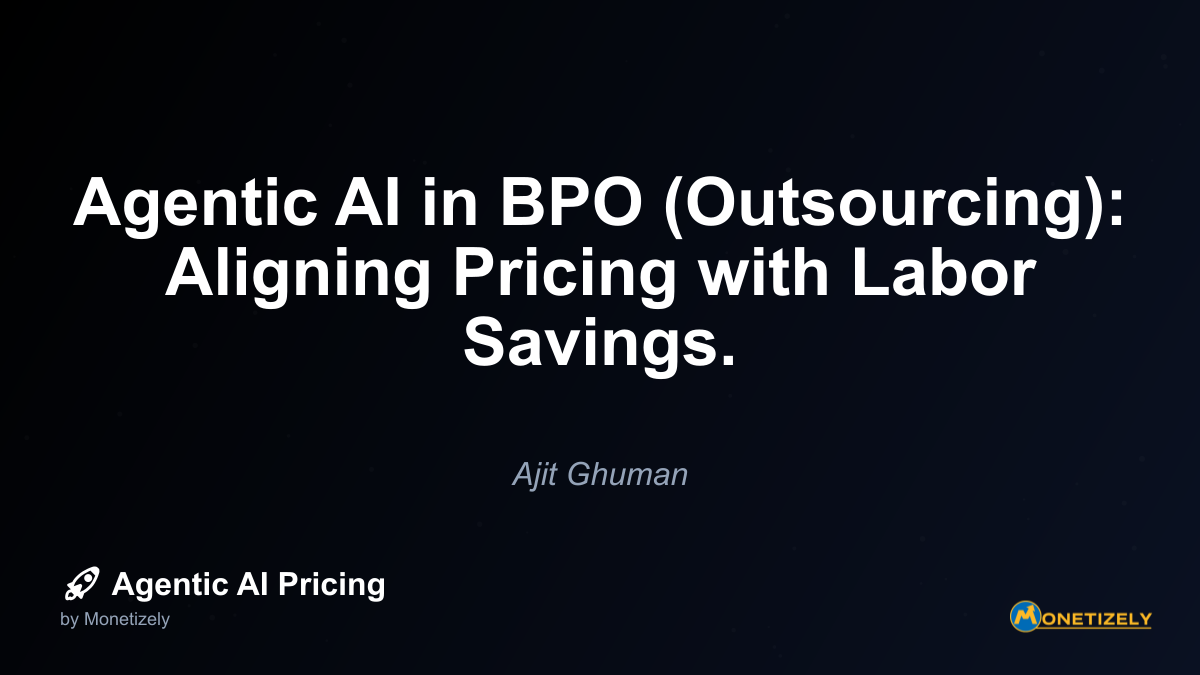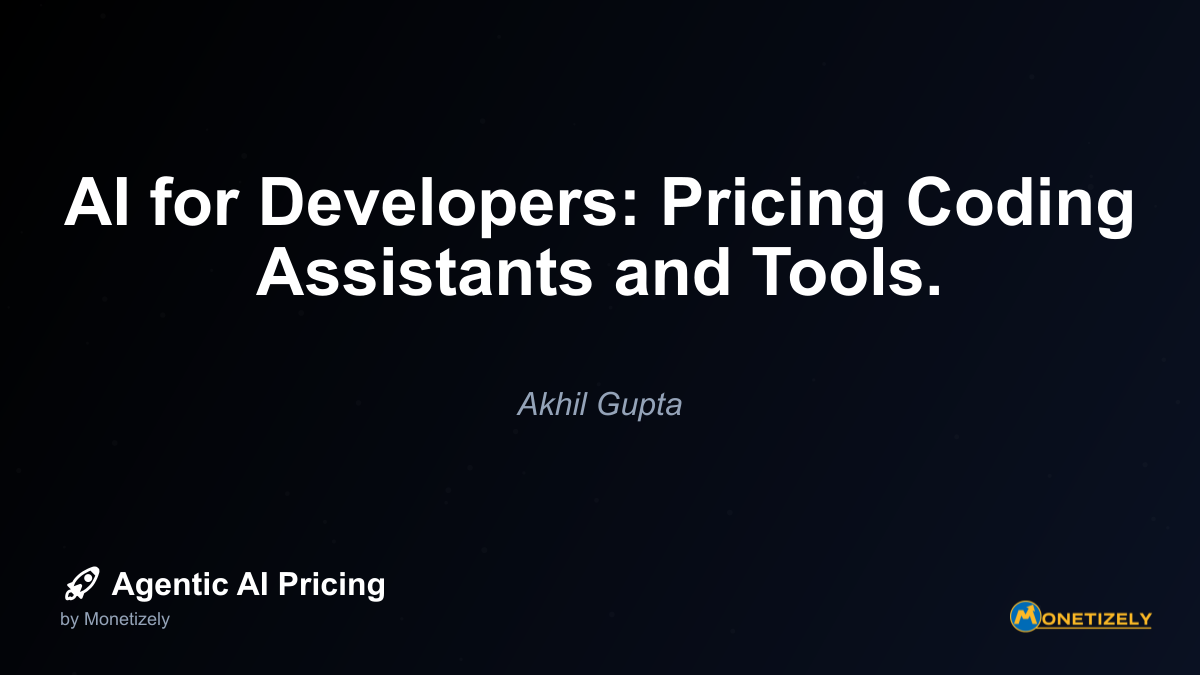· Ajit Ghuman · Industry Insights · 8 min read
AI in Healthcare: ROI Timelines and Pricing Considerations.
AI and SaaS Pricing Masterclass
Learn the art of strategic pricing directly from industry experts. Our comprehensive course provides frameworks and methodologies for optimizing your pricing strategy in the evolving AI landscape. Earn a professional certification that can be imported directly to your LinkedIn profile.

AI in healthcare represents a transformative force, promising to reshape everything from administrative workflows to clinical decision-making and patient care. However, the healthcare industry presents unique challenges for AI implementation—particularly regarding return on investment (ROI) timelines and pricing considerations. While other sectors might see rapid returns from AI deployment, healthcare organizations often face extended pathways to profitability due to regulatory hurdles, integration complexities, and the cautious approach necessary when implementing technology in clinical environments.
The Current State of AI in Healthcare
Healthcare stands at a pivotal crossroads with artificial intelligence. The potential applications span virtually every aspect of the industry:
- Administrative automation: Revenue cycle management, scheduling, and documentation
- Clinical decision support: Diagnostic assistance, treatment recommendations, and risk stratification
- Patient engagement: Conversational AI for triage, follow-up care, and health monitoring
- Operational optimization: Resource allocation, predictive maintenance, and supply chain management
The market reflects this potential, with healthcare AI projected to grow at a compound annual growth rate (CAGR) of 41.8% from 2022 to 2030, potentially reaching over $187 billion by the end of the decade. However, this growth comes with significant implementation challenges that directly impact ROI calculations and pricing strategies.
Why Healthcare AI Has Extended ROI Timelines
Unlike consumer technology or even enterprise software in other industries, healthcare AI faces several factors that extend the timeline from investment to meaningful returns:
1. Regulatory Compliance Requirements
Healthcare operates under stringent regulatory frameworks that significantly impact AI implementation:
- FDA Approval Processes: AI systems classified as medical devices require extensive validation and approval, often taking 3-7 years
- HIPAA Compliance: Privacy and security requirements necessitate additional layers of technology and process controls
- Documentation Requirements: Maintaining compliance often requires comprehensive audit trails and documentation
These regulatory hurdles create front-loaded costs and extended timelines before systems can be fully operational, pushing ROI further into the future.
2. Integration With Legacy Systems
Healthcare organizations typically operate with complex technology ecosystems:
- EHR Integration: Connecting AI solutions with electronic health records often requires custom development
- Interoperability Challenges: Healthcare systems frequently use multiple platforms that weren’t designed to communicate
- Data Migration: Historical patient data may need cleaning and restructuring before AI can effectively utilize it
A 2022 survey by the American Hospital Association found that 62% of healthcare organizations cited integration with existing systems as their top challenge in implementing new technologies, including AI.
3. Cautious Adoption Cycles
The healthcare industry rightfully approaches new technology with caution:
- Pilot Programs: Most implementations begin with limited-scope pilots lasting 6-18 months
- Phased Rollouts: Full deployment typically occurs in stages, often taking 2-3 years for enterprise-wide implementation
- Change Management: Clinical workflows are carefully established, and changes require extensive training and adaptation
This measured approach protects patients but extends the time to full implementation and therefore ROI realization.
4. Data Quality and Preparation Requirements
AI systems require high-quality, structured data to perform effectively:
- Data Cleaning: Healthcare data often contains inconsistencies requiring remediation
- Annotation Requirements: Many AI applications need expert-annotated data for training
- Ongoing Validation: Models require continuous monitoring and retraining with new data
These data preparation requirements can consume 60-80% of project timelines and budgets before the AI system delivers any value.
Realistic ROI Timelines for Healthcare AI
Given these factors, organizations must adjust their expectations for ROI timelines:
| AI Application Type | Typical ROI Timeline | Key Factors |
|---|---|---|
| Administrative Automation | 12-24 months | Lower regulatory barriers, direct cost reduction |
| Operational Optimization | 18-36 months | Complex implementation, indirect savings |
| Patient Engagement | 24-48 months | Adoption challenges, indirect revenue impacts |
| Clinical Decision Support | 36-60+ months | Regulatory approval, extensive validation |
These extended timelines don’t indicate poor investment potential—quite the opposite. Healthcare AI often delivers substantial returns once fully implemented, but the path to those returns requires patience and strategic planning.
How to Structure Pricing Models for Healthcare AI
The extended ROI timeline in healthcare necessitates thoughtful pricing approaches that align vendor and provider interests:
1. Phase-Based Pricing Models
Successful healthcare AI vendors often structure pricing to match implementation phases:
- Discovery Phase: Lower-cost assessment and planning engagements
- Pilot Implementation: Reduced pricing during limited deployment
- Scaled Deployment: Tiered pricing based on usage expansion
- Value Realization: Potential for value-based components once ROI begins
This approach reduces initial financial risk while establishing a pathway to full-scale implementation.
2. Value-Based Pricing Components
While challenging to implement, value-based elements can align incentives:
- Shared Savings Models: Vendor receives percentage of documented cost reductions
- Outcome-Based Pricing: Payments tied to achievement of specific clinical or operational metrics
- Performance Guarantees: Refunds or credits if specific performance thresholds aren’t met
A 2023 study by the Healthcare Financial Management Association found that 38% of healthcare AI contracts now include some form of value-based component, up from just 12% in 2019.
3. Compliance Cost Accommodation
Successful pricing strategies explicitly account for compliance-related costs:
- Compliance Package Add-Ons: Transparent pricing for regulatory documentation and support
- Validation Assistance: Services to help with regulatory submission and approval processes
- Audit-Ready Features: Built-in capabilities for maintaining ongoing compliance
These components acknowledge the real costs of healthcare compliance rather than hiding them in inflated base pricing.
4. Total Cost of Ownership Transparency
Healthcare organizations increasingly evaluate AI based on total cost of ownership (TCO):
- Implementation Services: Clearly defined pricing for integration and deployment
- Training Requirements: Costs for initial and ongoing staff education
- Maintenance and Updates: Pricing for model retraining and system updates
- Exit Costs: Transparency about data migration and transition costs if changing vendors
Vendors who provide TCO transparency typically win more deals, even if their initial pricing appears higher than competitors.
Case Study: Administrative AI Implementation at Regional Health System
A 350-bed regional health system implemented an AI-driven revenue cycle management solution with the following experience:
Initial Investment: $1.2 million (software, implementation, training) Annual Operating Costs: $380,000
ROI Timeline:
- Months 1-6: Negative ROI during implementation and training
- Months 7-12: Break-even as system began identifying revenue opportunities
- Months 13-24: Positive but modest ROI as staff adapted to new workflows
- Months 25+: Substantial ROI of 3.2x annual cost as system reached full capacity
Key Success Factors:
- Phased implementation approach
- Pricing structure that reduced initial costs
- Clear metrics for measuring success
- Executive sponsorship maintaining support through early phases
This timeline—nearly two years to significant positive returns—is typical for administrative AI in healthcare but would be considered extremely long in many other industries.
Strategies for Accelerating Healthcare AI ROI
While extended timelines are common, several strategies can help accelerate ROI:
1. Start With Targeted Use Cases
Begin with narrowly defined problems where impact can be clearly measured:
- Prior Authorization Automation: Directly reduces administrative costs
- Appointment No-Show Prediction: Immediate impact on scheduling efficiency
- Clinical Documentation Improvement: Direct revenue impact through improved coding
These focused applications can demonstrate value while broader initiatives develop.
2. Leverage Cloud-Based Deployment Models
Cloud deployment can significantly reduce implementation timelines:
- Reduced Infrastructure Requirements: Minimize on-premises hardware needs
- Faster Implementation: Pre-configured environments speed deployment
- Scalability: Easier expansion as value is demonstrated
A 2022 survey by Healthcare IT News found that cloud-based AI implementations reached initial ROI 40% faster than on-premises deployments.
3. Build Internal AI Competency
Organizations with internal AI expertise typically see faster returns:
- Data Science Teams: Build capabilities to customize and extend AI solutions
- Clinical Informatics: Bridge the gap between technology and clinical needs
- Change Management Expertise: Accelerate adoption through effective training and support
This expertise reduces dependency on vendors and accelerates the path to value creation.
Pricing Considerations for Healthcare AI Vendors
For vendors selling to healthcare organizations, several pricing considerations can improve market success:
1. Demonstrate Understanding of Healthcare Economics
Successful vendors align their pricing with healthcare financial realities:
- Budget Cycle Alignment: Offer pricing structures that work with annual budget processes
- Capital vs. Operating Expense Options: Flexibility between capex and opex approaches
- Grant Alignment: Structure offerings to align with innovation grant opportunities
This alignment reduces friction in the purchasing process.
2. Provide Implementation Risk Mitigation
Risk-sharing approaches can overcome adoption hesitancy:
- Satisfaction Guarantees: Refund options if implementation fails to meet expectations
- Phased Payment Schedules: Tie payments to implementation milestones
- Outcome Guarantees: Financial protection if promised outcomes aren’t achieved
These approaches demonstrate vendor confidence while reducing customer risk.
3. Create Multi-Stakeholder Value Propositions
Healthcare decisions typically involve multiple stakeholders:
- Clinical Value: Improved patient outcomes and provider experience
- Financial Value: ROI and total cost of ownership calculations
- Technical Value: Integration capabilities and maintenance requirements
- Compliance Value: Risk reduction and regulatory alignment
Pricing models that acknowledge and quantify value for each stakeholder group typically succeed more often.
The Future of Healthcare AI Pricing and ROI
Looking forward, several trends will likely impact healthcare AI pricing and ROI considerations:
1. Regulatory Standardization
As regulatory frameworks mature, compliance costs may become more predictable:
- FDA Digital Health Precertification: Moving toward more efficient approval processes
- Interoperability Standards: Reducing integration complexity and costs
- AI-Specific Guidance: Clearer pathways for AI validation and approval
These developments may reduce early-stage costs and accelerate time to value.
2. Consortium and Collaborative Models
Shared investment approaches are emerging:
- Health System Collaboratives: Multiple organizations sharing development costs
- Public-Private Partnerships: Government funding accelerating specific AI applications
- Open Source Foundations: Industry-supported development of common AI components
These models distribute investment costs while accelerating development.
3. AI as a Core Infrastructure Component
As AI becomes foundational rather than experimental:
- Platform Approaches: AI capabilities embedded in core healthcare systems
- Standardized Pricing: More predictable cost structures as the market matures
- Bundled Solutions: AI included within broader technology offerings
This evolution will likely normalize pricing and ROI expectations over time.
Conclusion
The healthcare industry stands to gain tremendous value from artificial intelligence, but realizing this value requires patience and strategic planning. Extended ROI timelines—often 2-5 years for full value realization—reflect the complex reality of healthcare implementation rather than any deficiency in the technology itself.
For healthcare organizations, success requires realistic timeline expectations, phased implementation approaches, and careful vendor selection with an emphasis on those who understand healthcare’s unique challenges. For AI vendors, success demands pricing models that accommodate extended adoption cycles, transparent value measurement, and alignment with healthcare’s regulatory and financial realities.
As the market matures, we can expect more standardized approaches to both implementation and pricing, potentially accelerating ROI timelines. However, the fundamental reality remains: healthcare AI is a long-term investment that requires patience, persistence, and partnership between vendors and healthcare providers to achieve its transformative potential.
Co-Founder & CEO
Ajit is the author of Price To Scale, a top book on SaaS Pricing and is the Founder of Monetizely. Ajit has led and worked in pricing and product marketing at firms like Twilio, Narvar and Medallia. His work has been featured in Forbes and VentureBeat. Ajit regularly consults with software companies from Seed stage to post-IPO on pricing strategy. Ajit is also a highly-rated co-instructor for 'The Art of SaaS Pricing and Monetization' on Maven.
Pricing Strategy Audit
Let our experts analyze your current pricing strategy and identify opportunities for improvement. Our data-driven assessment will help you unlock untapped revenue potential and optimize your AI pricing approach.




